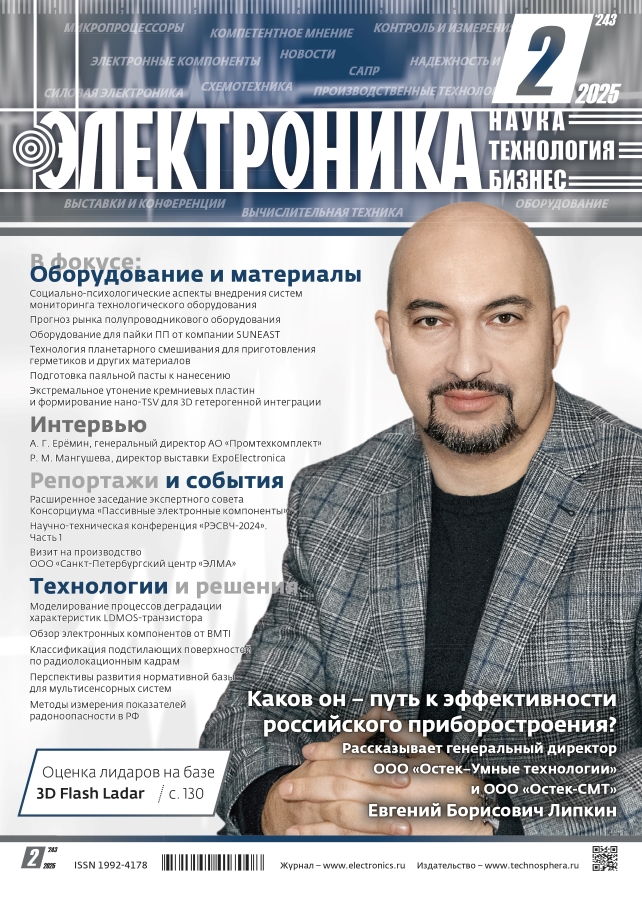Extreme silicon wafers thinning and formation of nano TSV for 3D heterogeneous integration
- Authors: Sukhanov D.1
-
Affiliations:
- ООО «Остек-ЭК»
- Issue: No 2 (2025)
- Pages: 112-114
- Section: Micro and nanostructures
- URL: https://journals.eco-vector.com/1992-4178/article/view/680354
- DOI: https://doi.org/10.22184/1992-4178.2025.243.2.112.114
- ID: 680354
Cite item
Abstract
The article considers the state-of-the art technologies that make it possible to thin silicon wafers to 500 nm and form nano TSV with dimensions of 180x250 nm and a depth of 500 nm.
Keywords
Full Text
About the authors
D. Sukhanov
ООО «Остек-ЭК»
Author for correspondence.
Email: Sukhanov.d@ostec-group.ru
заместитель технического директора
Russian FederationReferences
- Суханов Д. Шаг по направлению к квантовой электронике или жизнь микроэлектроники в эпоху постМура // Вектор высоких технологий. 2021. №2 (52). С. 20–25.
- Thomas D., Jourdain A. Extreme Si thinning and nano-TSVs to advance 3D heterogeneous integration // Chip Scale Review. 2021. V. 25. No. 1. PP. 34–38.
- Jourdain A. et al. Extreme thinning of Si wafers for via-last and multi-wafer stacking applications. – IEEE 68th Electronic Components and Technology Conference (ECTC). 29 May – 01 June 2018.
- Jourdain A. et al. Extreme wafer thinning and nano-TSV processing for 3D heterogeneous integration. IEEE 70th Electronic Components and Technology Conference (ECTC) in IEEE ECTC. June 2020.
- Van Huylenbroeck S. et al. A highly reliable 1 × 5 μm via-last TSV module. – IEEE International Interconnect Technology Conference (IITC). 2018.
Supplementary files
Supplementary Files
Action
1.
JATS XML
Download (114KB)
Download (952KB)
Download (145KB)
5.
Fig. 4. The sequence of the TSV structure formation process: a – alignment of Si-TSV with the lower part of M1, dry etching, stopping at STI; b – deposition of a silicon oxide sleeve (10 nm), etching at the bottom; c – metallization of TSV and Cu CMP; d – formation of BSM1. BS PASS – passivation layer on the back of the plate [2]
Download (398KB)
6.
Fig. 5. Setting up the nano-TSV etching process and an example after filling with Cu and CMP: a – the etching process using inductively coupled plasma (ICP); b – Bosch process at the initial stage; c – configured Bosch process; d – after filling with Cu and CMP [2]
Download (105KB)













